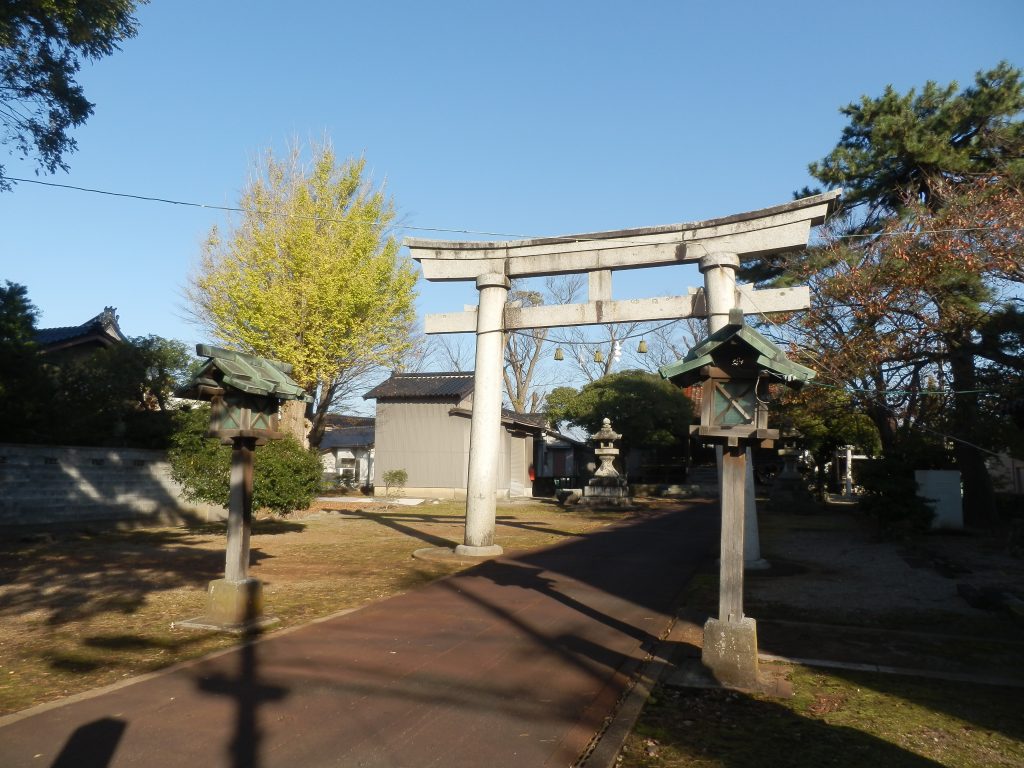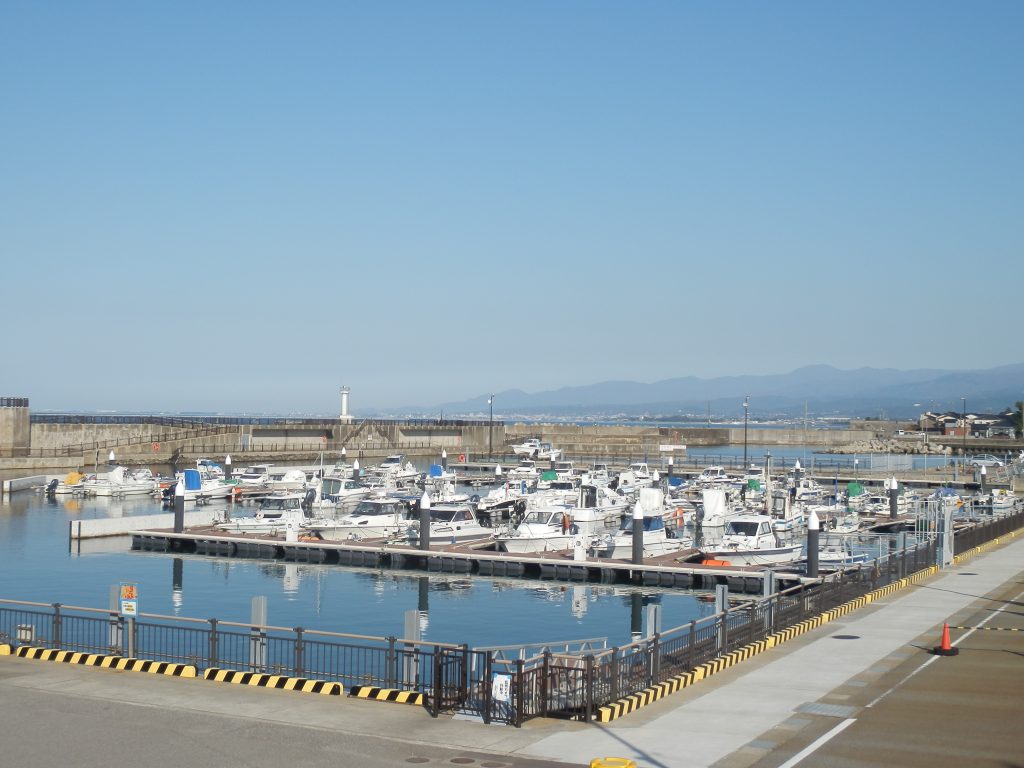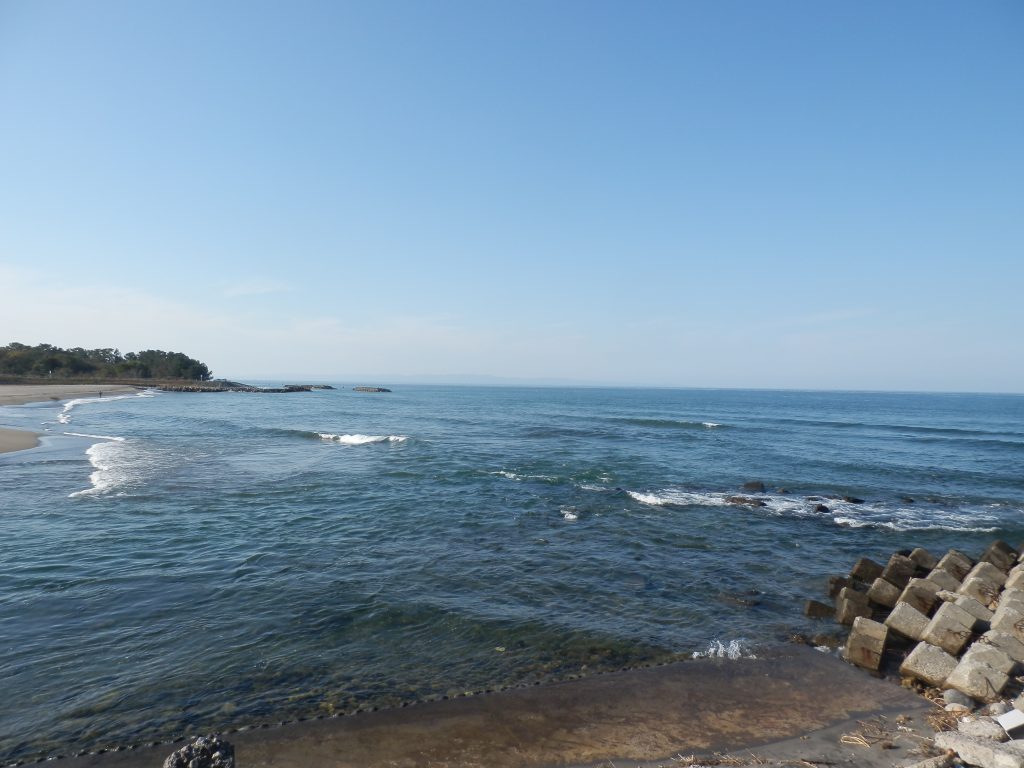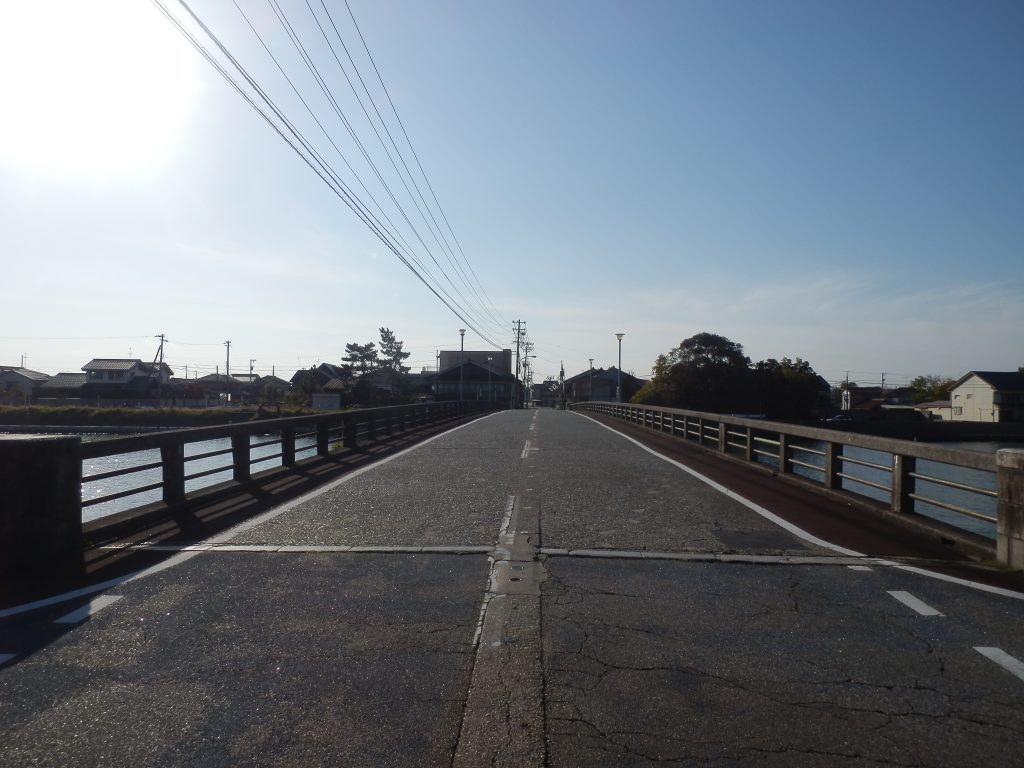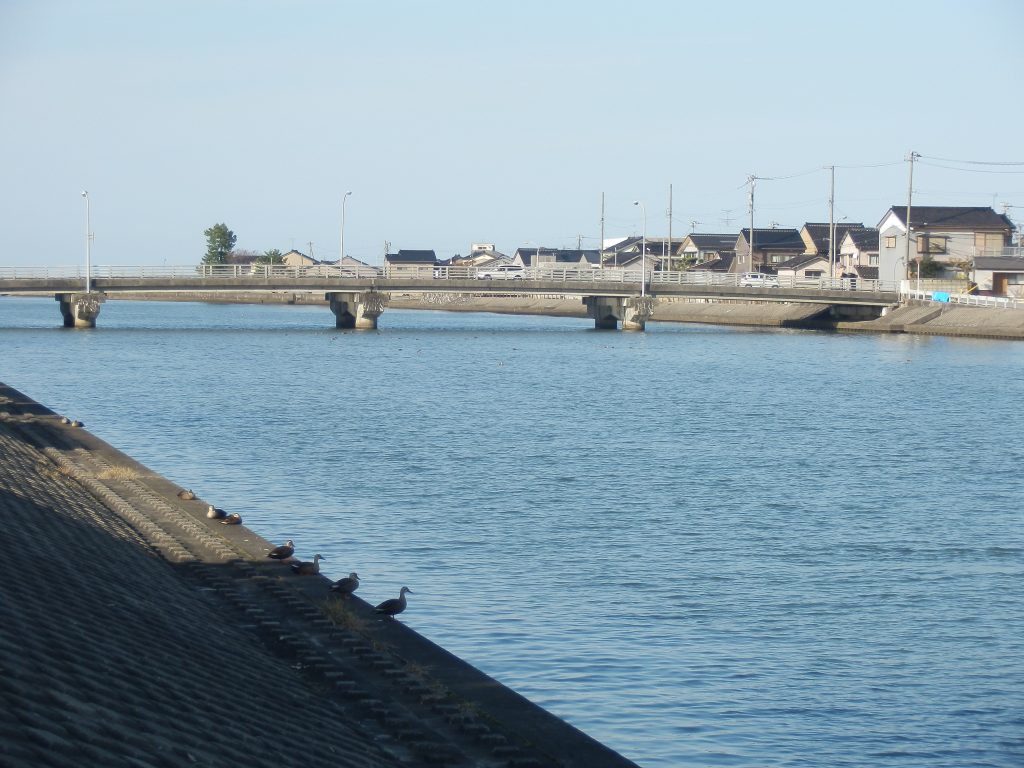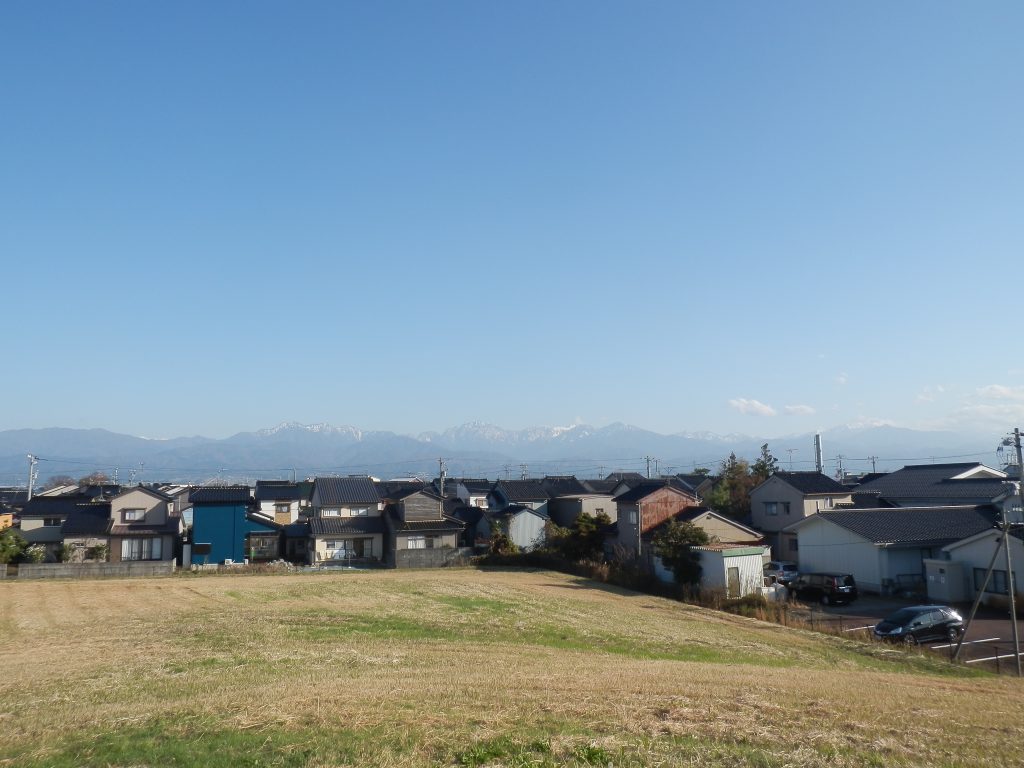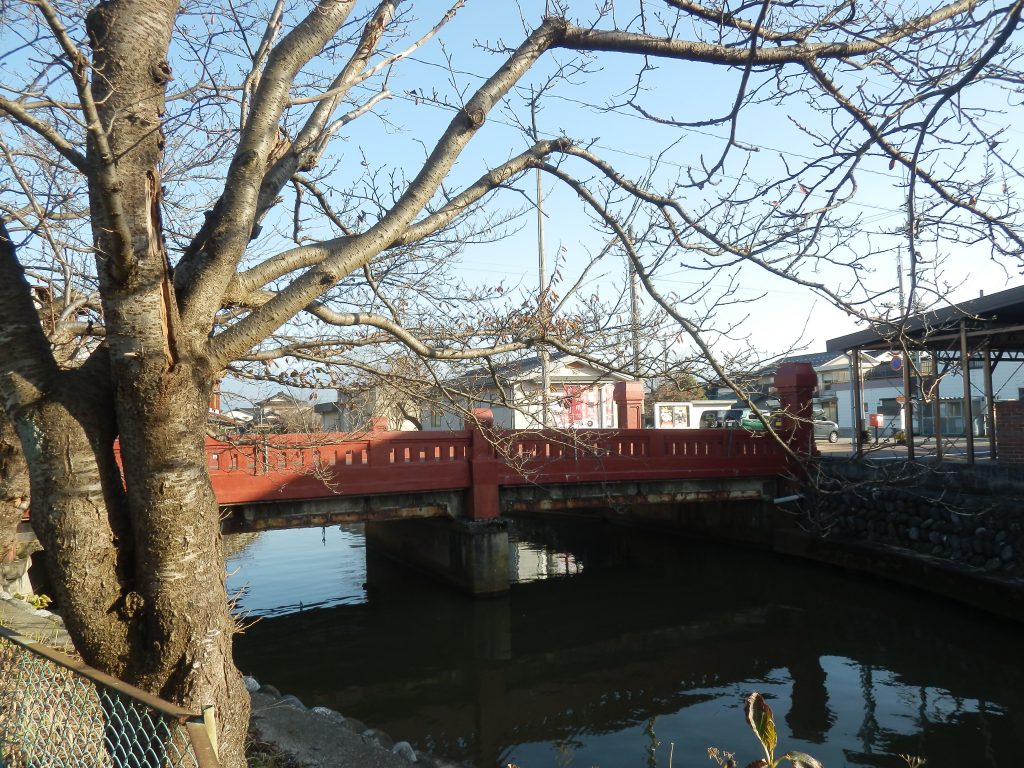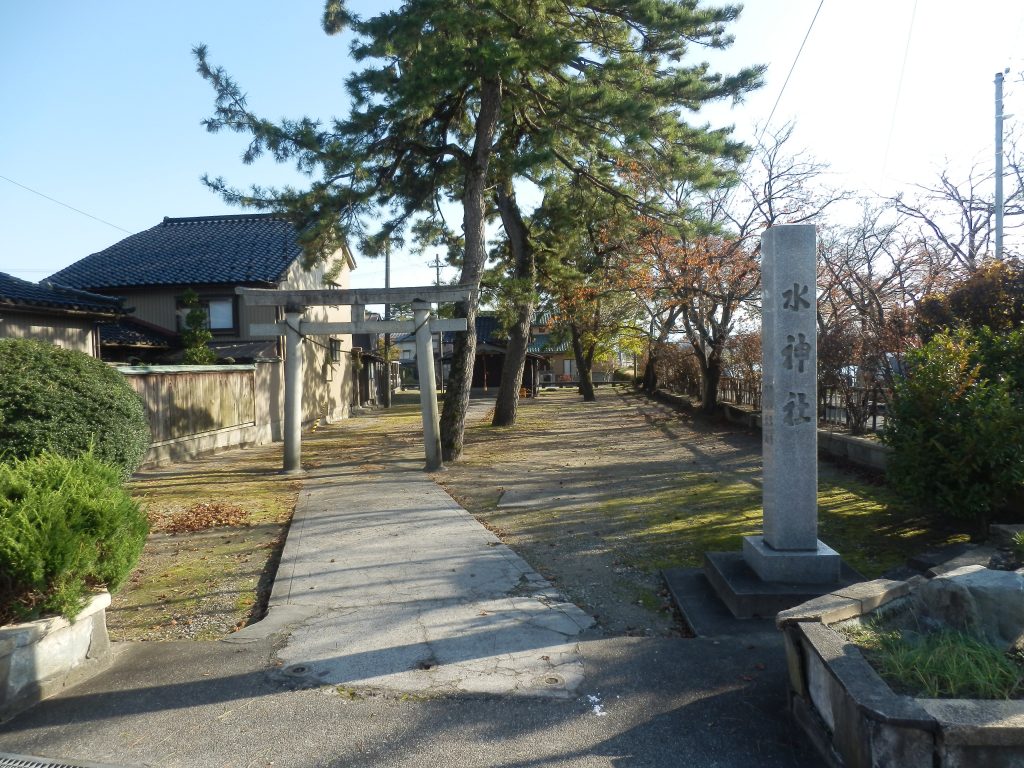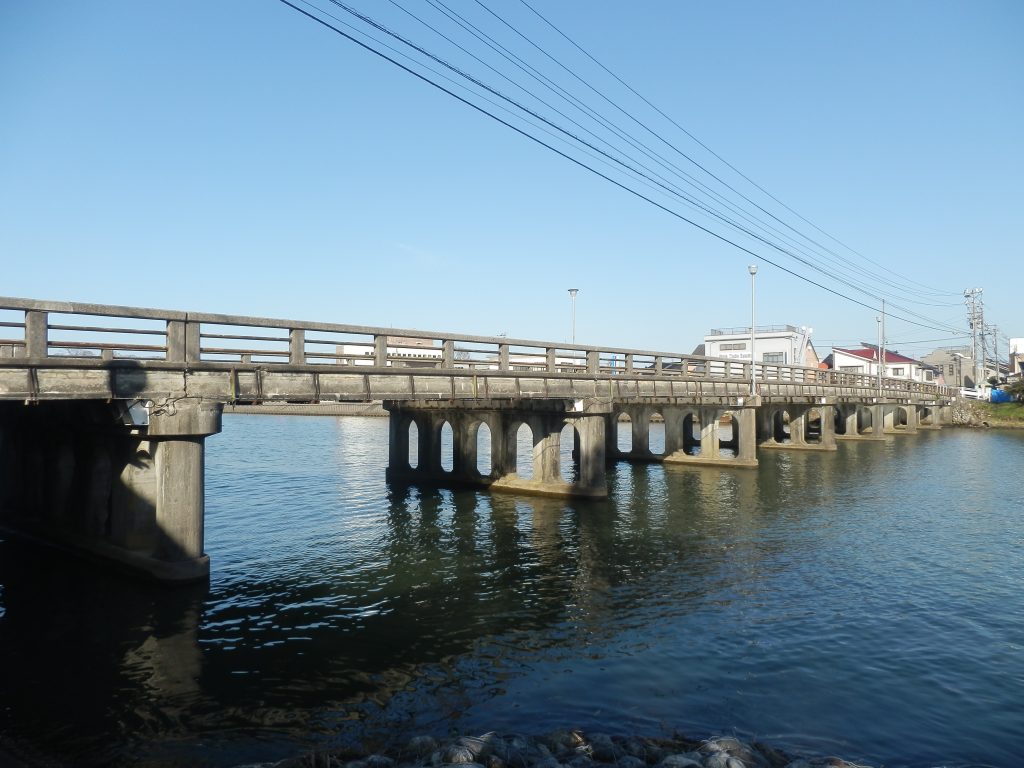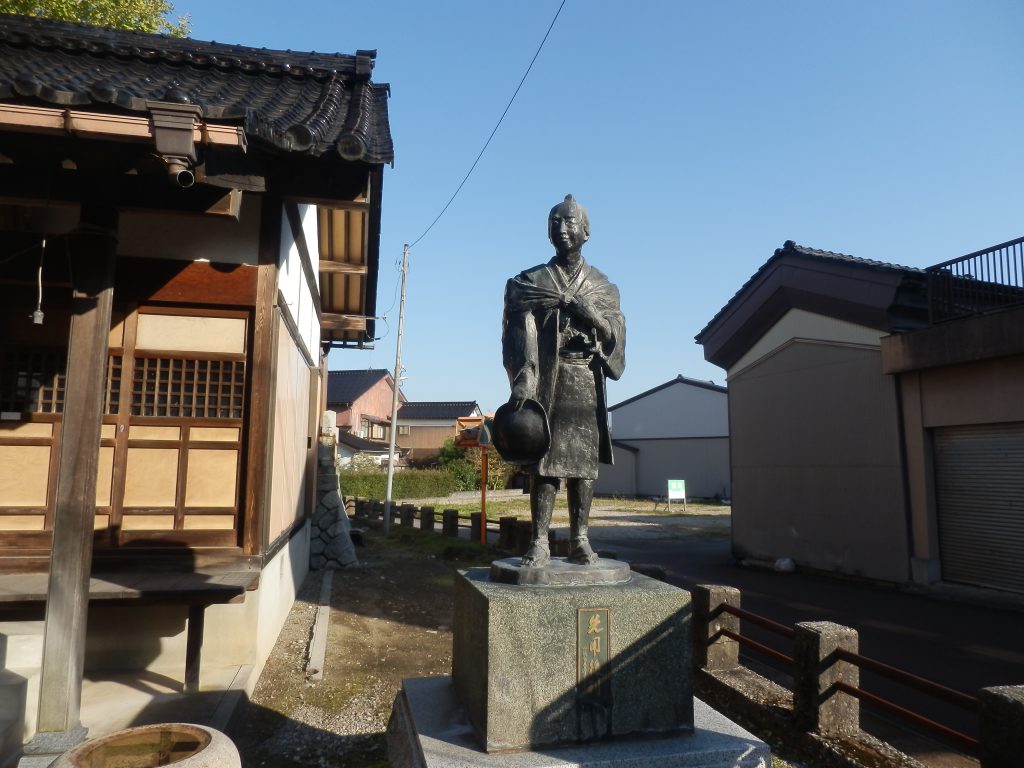Mizuhashi Guide Map
ギャラリー [Gallery]
- 水橋神社
- 水橋フィッシャリーナ
- 常願寺川河口
- 東西橋
- 照蓮寺
- 水橋漁港
- 白石川と浦の橋
- 水橋の町並みと立山連峰
- 下条川
- 水神社
- 東西橋
- 海士ヶ瀬神社の越中売薬先人銅像
水神社 [Mizujinjya]
幕末に水橋町肝煎等が藩主に申し出て架橋の許可が出たのが明治元年、その年に着工し完成したのが明治2年6月でした。橋の長さは136間(246m)、幅は2間5尺(約5.2m)途中2ヵ所に馬除けが設けられ青銅擬宝珠づきの欄干の見事な橋ができ「立山橋」と命名されました。この橋に要した用材は常願寺川奥山の御林杉から700~800本切り出し、足りない分の残り300~400本は常願寺川右岸流域の村々の神社境内にある神木を用いられました。
このように主として神木を用いたので住民は神の祟りを案じ、神慮を慰め、かつ川の安泰を念じて余材を使って橋のたもとに「水神社」を建立しました。これが「水橋水神社」の由来です。祭神は大国主命で毎年6月26、27日(現在は7月の第四土日)に祭礼が行われています。この祭礼が現在まで続いている水橋橋祭りです。
Kimoiri (coordinator) of Mizuhashi-cho requested the Hansyu (feudal lord) for a permission to build the bridge at the end of Edo era (1603-1838) and it was approved in the first year of Meiji era (1868). The bridge construction started within the year and completed in June of 1870. The bridge length was 246m and the width was 5.2m and named Tateyama Bridge. It had beautiful handrails with bronze Giboshi (traditional Japanese bridge ornament that resembles an upside-down onion) and 2 Umayoke, a space where horses stepped aside for superior ranked people to pass through the bridge. In order to build the bridge, 700-800 of Japanese cedar trees were brought from the government owned forest in the deep mountains by Jyouganji River and 300-400 of sacred trees were brought from the shrines in the villages on the right bank of the Jyouganji River due to shortage of material.
As sacred trees were used as the bridge material, people were afraid of god’s punishment. In order to alleviate the god’s will as well as wishing for the peace in the river, the “Mizujinjya” was built by the bridge’s leftover materials. This is the origin of “Mizuhashi Mizujinjya”. The shrine festival had been held on June 26th and 27th every year and now it is held on the 4th weekend of July. This festival is passed down to this date and called “Mizuhashi Hashi Masturui” (Mizuhashi Bridge Festival)
芭蕉の句碑 [Basyo’s Poem Monument]
水橋大正にある水橋神社境内に、松尾芭蕉が東北から日本海沿岸を行脚した折に詠んだとされる句碑が建てられています。
A poem composed by Basyo Matsuo (the most famous poet of the Edo period in Japan) is engraved in the stone monument in the Mizuhashi Shirine, located in Mizuhashi Taishyo. This poem was believed to be composed when he traveled the shoreline of the Sea of Japan on foot.
名横綱梅ヶ谷の墓・蓮如上人旧跡 [Tomb of the Famous Yokozuna Umegatake・Rennyo’s historical monument]
水橋中町蓮勝寺に水橋出身の名横綱梅ヶ谷の墓と蓮如上人の石碑があります。
The tomb of the famous Yokozuna (highest rank in sumo) and the monument of Rennyo, who was the 8th head-priest of the Hongan-ji temple, are located in the Renjyouji Temple of Mizuhashi Nakamachi.
米騒動の碑 [Monument of Rice Riots of 1918]
大正7年に起きた米騒動は水橋が発祥の地。旧水橋郷土史料館の前には米騒動の碑が建てられています。
Rice Riots of 1918, which is a series of riots that erupted in response to the fast inflation of rice. The riots originated here in Mizuhashi and the Rice Riots Monument was built in front of the former Mizuhashi Historical Museum.
水橋港の艀場跡 [The Site of the Old Barge Port in Mizuhashi Port]
江戸時代、北前船による交易で賑わっていた水橋港。艀場跡に常夜燈が設置されています。
Mizuhashi port was flourishing with Kitamaebune “Northern-bound ship” trading in Edo era. The night light grows throughout the night at the historic site.
一里塚と川平儀平先生筆塚 [Ichirizuka and Fudezuka for Professor Gihei Kawahira ]
水橋は北陸道の重要な拠点であったことを示す一里塚。
敷地内には川平氏が私塾を開いた功績を称える筆塚もあります。
Ichirizuka is a historical Japanese distance marker, similar to a milestone. This indicates that Mizuhashi was one of the important locations of Hokuriku-dou (Northern land circuit).
There is stone monument called Fudezuka for Prof. Kawahira to honor his effort to open a private school.
天満宮と梅隠先生筆塚 [ Tenmangu* and Dr./Professor Baiin]
1680年尾島半兵エが自宅で石像を発見し、夢枕に菅原道真が現れたので社殿を作ったとのいわれがあります。
(*Tenmangu: Shinto Shrines which enshrines Sugawara no Michizane as the deity)
It is said that this Tenmangu was built after Hanbe Ojima found a stone monument at his house and Sugawara no Michizane appeared to him in a dream in 1680.
水橋フィッシャリーナ [Mizuhashi Fisherina ]
マリンスポーツや釣りを楽しむための海洋性レクリエーション施設。ボートや遊漁船150席を保管できます。
Mizuhashi Fisherina is a recreation facility for marine sports and fishing. It can accommodate up to 150 boats and fishing boats.
白岩川の河口 [The Mouse of the Shiwaiwa River ]
白岩川の河口はハゼ釣りの絶好の釣り場となっています。
The mouse of the Shiraiwa River is an ideal fishing spot for gobies.

